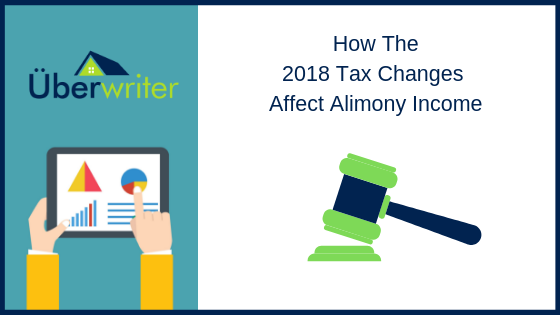Our last blog we talked about how the changes to the 2018 1040 tax form affected mortgage underwriting requirements. The key topic in that blog was that mortgage calculations were the same, but the location on where to find the income has changed on the 2018 1040 form.
Today’s topic is on Alimony, the new tax code has really “flipped the script” on the tax responsibilities dealing with alimony. The change we want to point out is that divorcee decrees signed as of January 1, 2019 have different tax rules then decrees signed prior to Jan 1st 2019. Because of these tax rule changes, alimony income can now be grossed up to qualify a borrower on a mortgage.
As a reminder, Fannie / Freddie / FHA allow income that is considered Non-Taxable to be grossed up an average between 15-25% depending on the program. All those agencies outline in their guidelines examples of income that is non-taxable and what is required to allow you to gross up income. For years Alimony did not meet “Non-Taxable Income” requirements for any agency, but with the new tax code, alimony can slide into “non-taxable” income realm soon.
What changed?
Old Rule
The individual paying alimony or maintenance payments can deduct payments from their income. The person receiving the payments includes them as income.
New Rule (Effective Jan 1, 2019)
The person making alimony or maintenance payments does not get to deduct them, and the recipient does not claim the payments as income. This goes into effect for any divorce or separation agreement signed or modified on or after Jan. 1, 2019.
Article Source Magnify Money by Lending Tree “Tax Reform 2019 Explained”
Other impacts to mortgage underwriting
One of the tools used to “detect” if the borrower was paying alimony was reviewing the tax returns. With this change when you are reviewing the 2019 tax forms , this will no longer work.
Keep in mind the tax forms do still have lines for “alimony received” (Schedule 1 box 11) and “alimony paid “ (Schedule 1 box 31), but these are for tax returns dated prior to 01/01/2019.


2 Responses
What about employees that still have business out pocket expenses that they cannot claim and are not reimbursed at all. Wouldn’t we still want to know this data to more accurately calculate the DTI? Thanks.. Fred Jeziorski… fredjeziorski@comcast.net
Hi Fred
Keep in mind our DTI calculations do not capture every living expense. For example, we don’t add gas, food, insurance, or utilities in the mix. So having these expenses removed from the DTI should have a very minor impact.